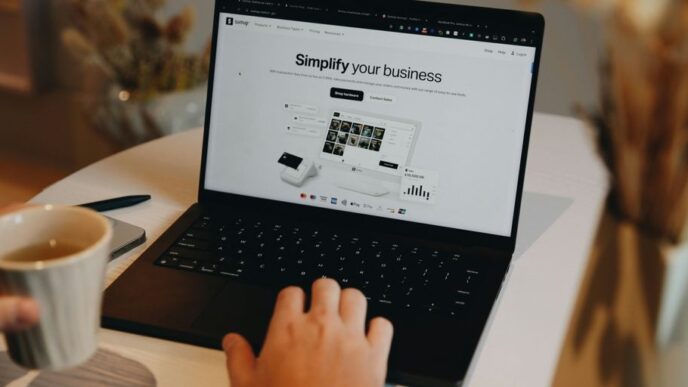Businesses in the fast-paced marketing world continuously seek new ways to engage with their target audience. While the global economy provides several options, it is critical not to overlook the value of native language marketing. Advertising localization and native language marketing are essential instruments in worldwide marketing initiatives. Understanding and capitalizing on local knowledge may be game-changers for organizations looking to prosper in different markets.
Language is utilized to communicate with your audience across all channels, whether through digital marketing, traditional advertising, or customer service. The tone and style of your language have a significant impact on your customer connections and experience.
The most successful marketing initiatives are built on storytelling. But only if the tale is delivered correctly—which is where native language marketing comes in.
What is the Definition of Native Language Marketing?
Content developed in regional languages is referred to as native language marketing or vernacular marketing.
With the growing number of non-English speaking internet users, there is a great chance to engage with a broader audience by communicating in their native tongue.
Working with locals who understand the historical and cultural context of that language and the people who speak it is the greatest way to do this. Your international marketing strategy must include more than just English to reach a worldwide audience.
Native languages are critical to your brand’s cultural relevance. Because language is emotive, our strong feelings can only be expressed in our tongue. You may develop a far greater emotional connection with your audience if you engage with them in their native language. Local knowledge should be combined with native language. Local expertise is essential when expanding into a new location because the small things that non-locals may not notice genuinely distinguish each local market. Details like expressions, popular issues, and industry expertise are all critical—and the locals are the greatest people to share these insights with you.
Native Language Marketing and Marketing Translation
While native speakers develop native language marketing in that language, marketing translation refers to information translated from another language.
Native language marketing performs better because it is produced with the unique target market in mind, employing language and subtleties that the audience understands. However, if content marketing is localized rather than just translated, it has the potential to work just as well.
Marketing localization entails translating and changing the material to ensure it is relevant to the target and sends the correct message. Language, cultural references, audience preferences, market climate, and all other details crucial for connecting with local audiences are all taken into account by marketing localization services.
Most Successful Campaigns in Native Language Marketing
Some brands have achieved positive outcomes from adopting native languages in their marketing. Incorporating local languages into your marketing efforts can transform ordinary material into extraordinary content marketing campaigns.
Here are a few effective campaigns that all use local languages:
- Policy Bazaar, one of India’s major digital insurance markets, is at the top of its game. They discovered a collection of Hindi keywords and developed messages that targeted them. They subsequently set up a landing page in Hindi because the experiment was so effective. They overcame a linguistic barrier and reduced their cost per lead. It was now 18% lower, with an 11% increase in clicks via local language terms.
The success of Policy Bazaar reinforces what we already understood. People are more likely to respond to your advertisement if it is spoken or displayed in their language. It’s not only about reaching new customers; marketing in local languages allows you to create meaningful relationships with your target audience, which leads to higher conversion rates.
- H&M‘s integration into the Amsterdam way of life
H&M launched a specialized marketing campaign that spoke to the interests of their local clients in order to appeal to modern shoppers in Amsterdam.
This campaign goes beyond marketing by stocking more local labels and providing client services such as mending, altering, selling, and renting clothing—all while addressing the lifestyle and interests of Amsterdam shoppers.
The brand has released a marketing video that captures the city’s essence and the voices of its target audience, which is a mix of Dutch and English due to the city’s vast multinational population. This is an excellent example of bilingual marketing.
- Lufthansa is “More Indian than you think”
Lufthansa, a German airline, launched a campaign in 2014 called “More Indian than you think.” The ad aims to show their Indian consumers that India is there at every stage of their travel, from the in-flight cuisine to the entertainment.
It made use of language to depict their consumer experience. They promoted the airline to Indian travelers using a series of TV commercials and microsites in English, Tamil, Telugu, Gujarati, and Kannada. According to Lufthansa, the “More Indian than you think” advertising increased bookings by 13%.
Finally, native language marketing is about connecting with people on a personal and cultural level, not just speaking a different language. The advantages of having local knowledge are apparent, from establishing trust and credibility to reaching a larger audience and adjusting to market changes. Advertising and marketing localization for your brand necessitates a deliberate blend of innovation, cultural sensitivity, and technological prowess.
If you actually want to touch the emotions and souls of your local audiences, you must learn to communicate in their language. That includes more than simply the words you use but also how you use them. Your messaging and the environment of your market are equally crucial.
To compete in today’s global world, firms must realize the value of native language marketing as a critical marketing strategy. You will broaden your market reach and enhance your connection with clients, resulting in success and growth for your business.













